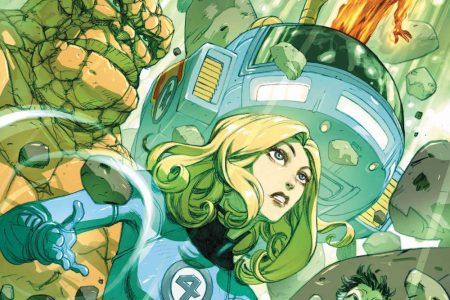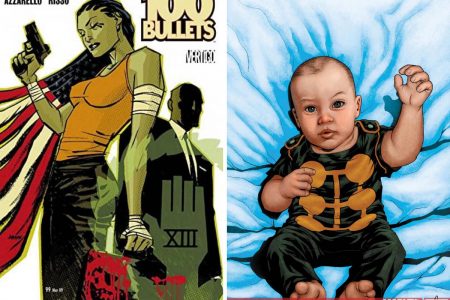Written by Tom Tully
Drawn by Joe Colquhoun
Published by Titan Books
This is the third handsome hardback collection of strips of Johnny Red from Battle in 1978 (I reviewed the first volume previously), compiling the storyline where Johnny ‘Red’ Redburn, a British pilot who ended up in Russia fighting with a Russian fighter squadron after accidentally killing another British officer, ends up at Stalingrad in October 1942, where the German Sixty Army is laying siege to the city while Russian soldiers and citizens try to defend it. As Garth Ennis points out in his excellent introduction (where he sets the scene for the stories in the book and tells you more about Hurricane fighters than you ever wanted to know), not only does this book do an excellent job of portraying the brutal reality of this horrific confrontation, it also manages to make heroes of Soviet Communists in a British war comic, which is an amazing achievement.
The first storyline concerns the conclusion of the storyline from the second collection, where the brother of the soldier Red killed is out for revenge (Tully does a great job of setting up this story in the first caption of each strip, which was only three or four pages each week, with the minimum of exposition to understand the story). Although there is dramatic licence in the stories, it is based on historical fact, and the accuracy of the book is also represented in the artwork, which is excellent in its depiction of aerial battles and ground conflict and the ravaged cityscape, packing in immense detail into the many panels needed to tell the story without losing clarity or connection with the characters. Colquhoun has a rough edge to his line work, appropriate to the nature of war comics and their harsher setting, but the detail and attention in every panel is always present and it really puts you in the heart of the action and the intense conflict.
After the first storyline, there a small interlude that isn’t as strong, where Johnny Red is captured by Germans and held to be executed before being rescued by his Russian co-pilots, before getting into the main story about the fighting in Stalingrad and the Angels of Death, a fictional representation of the Russian women of the 588th Night Bomber Regiment, nicknamed the Night Witches. These were heroic women who fought and died throughout the war in the toughest conditions imaginable, and it is to the testament of the book that the fictional counterparts play tribute to their legacy.
Another interesting aspect of this book, again pointed out by Ennis in his introduction, is the portrayal of Captain Nina Petrov, the leader of the Night Witches. She is shown as someone who is equally as competent in war as our main hero and is treated as an equal within the stories, be it flying her obsolete bi-plane in treacherous conditions to bring supplies to the beleaguered Russians in Stalingrad while the German army tries to stop them, to fighting with Johnny Red on the ground in Stalingrad, killing Germans and getting injured.
These stories were published in the 1970s, not a great time for the portrayal of women in popular culture, let alone a boy’s comic book, so Tully and Colquhoun have done something special with this book. The stories here are exciting and educational (without being dry) but they also serve as a reminder of history and what it was like in reality (truly ‘grim and gritty’ comics), as memory of the war recedes and the people who served and survived pass away, keeping alive the memories so that we never forget the sacrifices that were made, but all told in excellent comic book form.
Disclosure: this book was provided for review purposes.




